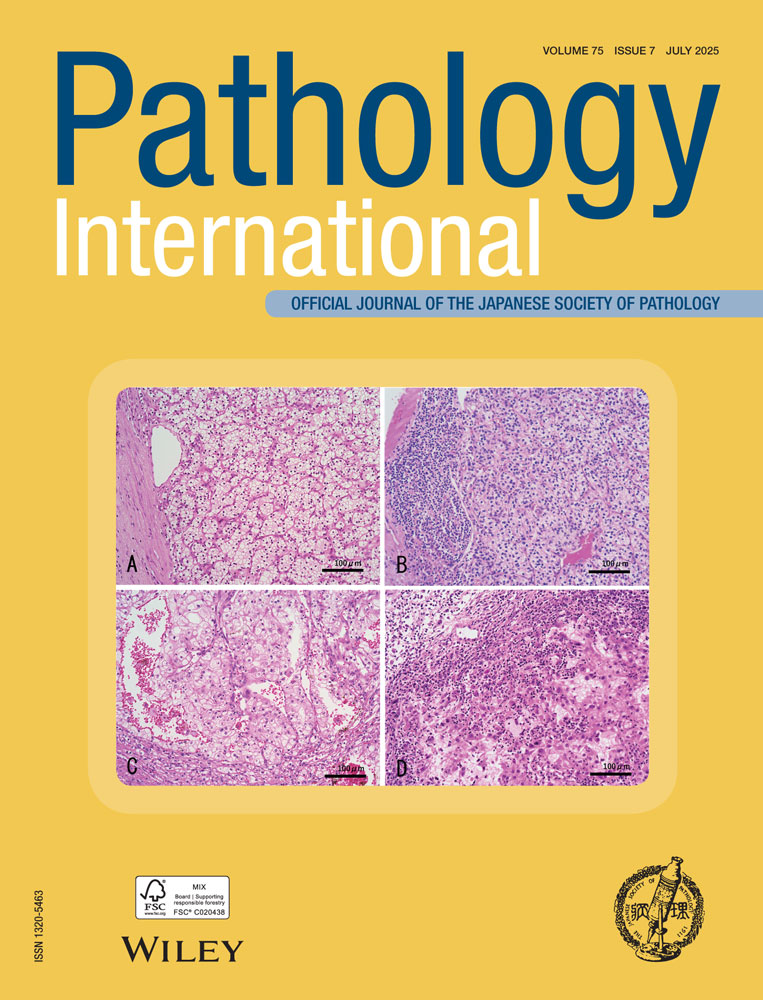Role of heat shock protein 47 on tubulointerstitium in experimental radiation nephropathy
Abstract
The molecular mechanisms of fibrosis in radiation nephropathy have received scant attention. Heat shock protein 47 (HSP47), a collagen-binding stress protein, helps in the intracellular processing of procollagen molecules during collagen synthesis. We investigated the role of HSP47 in the progression of radiation nephropathy using experimental radiation nephropathy. Experimental rat groups were as follows: (i) group I, sham operated (n = 12); (ii) group II, single doses of irradiation, either 7, 15 or 25 Gy to left kidney (n = 60); and (iii) group III, a similar irradiation procedure as group II after right nephrectomy (n = 60). The rats were followed up until 9 months after renal exposure to radiation. Renal dysfunction (as determined by serum creatinine and blood urea nitrogen) and hypertension were noted in group III rats, along with inflammatory cell infiltration and interstitial fibrosis (as determined by increased deposition of collagens). Compared to control rat kidneys, an increased expression of HSP47 was noted in kidneys obtained from irradiated rats. By double immunostaining, HSP47-expressing cells were identified as α-smooth muscle actin-positive myofibroblasts and vimentin-positive tubular epithelial cells. Increased expression of HSP47 was closely associated with increased deposition of collagens in the widened interstitium of irradiated rats. Overexpression of HSP47 by phenotypically altered tubulointerstitial cells might play a role in excessive assembly/synthesis of collagens and could contribute to tubulointerstitial fibrosis in radiation nephropathy.




